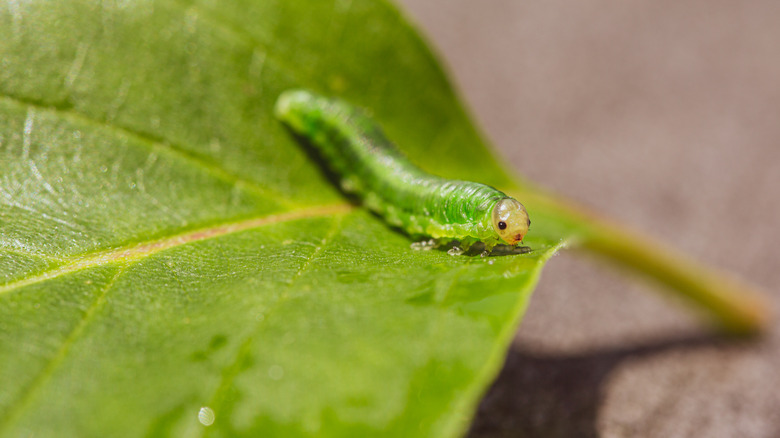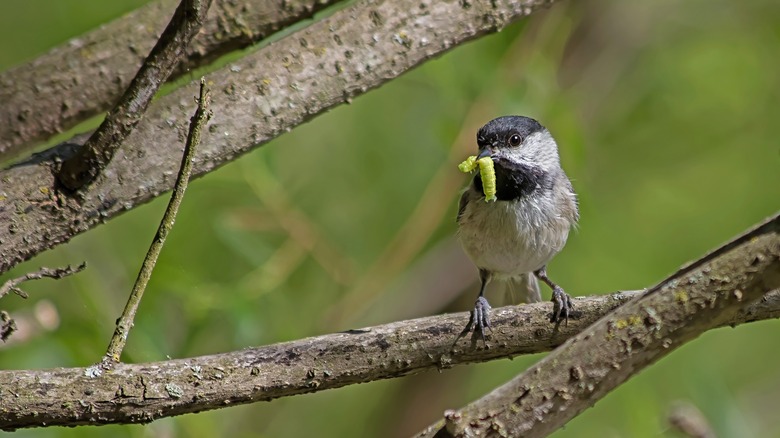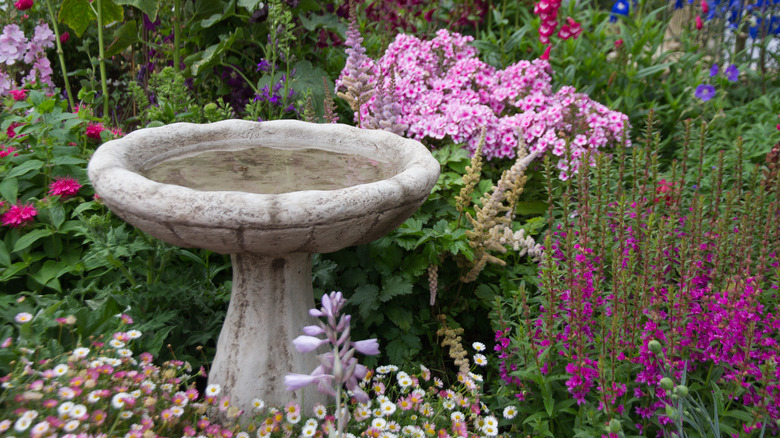Attract This Common Bird And Bid Farewell To Your Garden Pest Worries
Wild birds aren't just fun to watch, they can also be extremely helpful in the garden. Not only do many birds eat weed seeds that would otherwise sprout up in your flower beds, but they often eat pests like caterpillars as well as other insects like aphids and beetles that might otherwise devour your garden. One of the best birds to attract to your garden to help with pest control is the charming and chatty chickadee.
Known for their distinctive cry that sounds like they're saying they're own name, chickadees (Poecile spp.) are found in most of North America, and include species like Carolina chickadees (Poecile carolinensis) which are located primarily in the southeast, black-capped chickadees (Poecile atricapillus) which thrive in northern parts of the continent, and mountain chickadees (Poecile gambeli) that live in the southwest. Unlike many birds, chickadees don't migrate; instead, they stay in the same region year-round. While chickadees eat primarily nuts and seeds from their caches and bird feeders during winter, in the summer, a single nest of chickadees can eat as many as 5,000 caterpillars in a year. While caterpillars are their preferred food, they're also more than willing to take care of aphids, beetles and other pests too. Using native plants and bird feeders, as well as providing a water source and nesting locations, is sure to make these little garden guardians feel right at home in your yard.
Use native plants and bird feeders to attract chickadees
One of the best ways to encourage chickadees to forage for pesky insects in your yard is by planting native species. A study in the journal Biological Conservation found that chickadees prefer to live and hunt for insects on and around native plant species. As native plants are perfect for bringing birds to your yard, you should consider landscaping with at least 70% natives. Some of the best plants for attracting chickadees include trees like oaks, native birches, and black walnuts. Smaller shrubs like native viburnums and blueberries, as well as flowers like echinacea and black eyed Susans, can also help provide these birds with food year-round.
If you have a good location to add a bird feeder to your yard, that can be another great way to attract chickadees. While chickadees are easily able to eat from both tube-style feeders and suet feeders, you may want to consider using a suet feeder for chickadees, especially during cold winter months. As chickadees don't migrate during winter, they need to eat a lot of high-energy food to keep warm, and multiple studies have shown that chickadees that have access to bird feeders during winter months have better survival rates than those that don't. Just make sure to properly clean your backyard bird feeder regularly.
Encourage chickadees to visit with water and nesting sites
One of the best ways to encourage birds of all kinds to visit your yard is to provide them with a liquid refreshment. While stunning ponds and fountains can be great, even a small bird bath can make a big difference in the number of birds that will come to visit your garden. Just be sure the water stays clean so you keep mosquitoes out of your backyard water feature.
Another great way to encourage chickadees to live in your yard and eat insects is to provide them with a nesting site. Chickadees naturally nest in tree cavities, but if that isn't an option in your yard, then you can also create a PVC pipe nesting tube like the ones recommended by the Smithsonian's National Zoo and Conservation Biology Institute, or a nesting box like the ones Oregon State University provides instructions for. Then the caterpillars and other insects that would otherwise be destroying your garden can be a nutritious snack for chickadee babies.


